
| Home | Aerospace | Biology | Chemical | Computers | Mathematical | Mechanics |
Schedule Summary
November 22
Clicking on a link in this table would take you directly to the meeting.
| 10:00 | Ishan Bajaj | Multi-scale optimization for materials discovery and system design of thermochemical energy storage systems in concentrated solar power |
| 10:30 | Abhijit Chatterjee | Probabilisitic microkinetic modelling approach: Tackling complexity in heterogeneous catalysis, multicomponent materials and solid state ionics |
| 11:00 | Ananth Govind Rajan | Multi-Scale Simulations to Design Materials for Separations and Catalysis |
| 11:30 | Vinod Janardhan | A Julia Package for Modeling Thermochemistry, Chemical Kinetics, and Transport Processes |
| 12:00 | Fatima Jalid | Ab-initio Microkinetic modeling and Simulations – Towards the Design of Transition Metal Catalysts for Selective Transformation of Hydrocarbons |
| 12:30 | Ankit Tyagi | Physics based AI/ML for large scale physical applications |
| 13:00 | Lunch Break | |
| 14:30 | Paramita Haldar | Molecular Modeling and Atomistic Simulation from Biomolecules to Nanomaterials |
| 15:00 | Raghvendra Gupta | Modelling Transport Processes in Chemical and Biomedical Systems |
| 15:30 | Shelaka Gupta | Proton Coupled Electron Transfer in Furfural Alkylation Reaction on Pd Nanostructures: A Combined Experimental and Theoretical Study |
| 16:00 | Jithin Varghese | Hierarchical computations guided sustainable heterogeneous catalytic reaction engineering |
| 16:30 | Tarak Patra | Computational Design of Sustainable Polymers |
Our Esteemed Speakers
| November 22 at 10:00 | |
 Ishan Bajaj IIT Kanpur | Multi-scale optimization for materials discovery and system design of thermochemical energy storage systems in concentrated solar power It is critical that an increasing fraction of the world’s energy demand is satisfied by renewable energy to keep the global temperature rise below 2 ℃. While using photovoltaic or wind power with battery can provide reliable electricity, another promising strategy to deliver cost-effective and dispatchable renewable power is integrating concentrated solar power (CSP) with thermal energy storage (TES). Due to technological advancements, CSP costs were reduced by 68% during the previous decade. It is estimated that CSP could provide 11% of global electricity by 2050. Among various available thermal energy storage technologies, thermochemical energy storage (TCES) is an emerging alternative for the next-generation CSP plants because of their high energy density, ability to deliver heat at a higher temperature, and low heat loss for long storage times. TCES is based on a reversible reaction, wherein heat is required for the forward reaction, and thus, the reaction enthalpy is stored in the products. Deploying CSP-TCES systems at an industrial scale would require both material- and process-level considerations. However, these aspects are often considered in isolation. Accordingly, an optimization model is developed to simultaneously optimize the material properties, design, and operating conditions while considering limitations and correlations in material thermodynamic properties. Importantly, the model also accounts for seasonal solar variability. Specifically, a stochastic programming approach is adopted to account for variability in direct normal irradiation (DNI) and sun hours. Six representative scenarios are chosen from the annual data using the centroid clustering algorithm. The bounds on the material properties and the correlation between them are captured by enforcing the optimal material properties to lie within the convex hull formed by the properties of existing materials. The solution of the model gives the optimal design variables (collector area, reactor volume, heat exchange area, etc.), scenario-specific operational variables (unit temperature, flow rates of streams, storage hours, etc.), and material properties (reaction enthalpy, equilibrium temperature, heat capacity, stoichiometry coefficient, etc.) from which the minimum LCOE is calculated. We provide insights into the desired material properties and illustrate that a further 10% reduction in LCOE is possible compared to the best available material. Author Bio: Ishan Bajaj is an Assistant Professor in the Department of Chemical Engineering at IIT Kanpur. He received his B.Tech. in Chemical Engineering from IIT Bombay and PhD in Chemical Engineering from Texas A&M University. He spent two years as a postdoctoral research associate at the University of Wisconsin-Madison and one year at Princeton University. His research interests include developing optimization models, theory, and algorithms for problems in the area of process systems engineering. Due to his research contributions and professional achievements, he has received several awards, including the PSE Young Researcher and FOCAPO travel award from the CAST division of AIChE and the distinguished graduate research award from the Chemical Engineering Department at Texas A&M University. |
| November 22 at 10:30 | |
 Abhijit Chatterjee IIT Bombay | Probabilisitic microkinetic modelling approach: Tackling complexity in heterogeneous catalysis, multicomponent materials and solid state ionics Achieving an accurate depiction of the catalyst surface can be a really challenging task, as the catalyst atoms and adsorbed molecules typically order/arrange themselves in a manner that is far from perfectly-random. The catalytic system can be thought as being composed of components that interact in ways that lead to nonlinearity, collective dynamics, hierarchy and emergent behavior. Similar problems are also encountered in broad areas of material phase behavior and solid state ionic conduction, just to name a few. The short-range order (SRO) parameter often becomes a useful mathematical quantity for understanding the global structure. SRO refers to the likelihood of finding atoms/molecules of a particular type, in the vicinity of others atoms of same/another type. The SRO parameter is dictated by both micro- and macro-scopic parameters, such as time, interactions, thermodynamics and kinetics (reactions, diffusion, and other transport processes). I will discuss evolution equations for the SRO parameter - these form the probabilitistic microkinetic modeling framework. These equations can help provide an accurate picture of the thermodynamics and kinetic behavior in a variety of complex systems. Examples will be provided to demonstrate how this new formalism can help bridge experiments and atomistic methods. Author Bio: Prof. Chatterjee received his bachelor and masters degrees from IIT Delhi, and Ph.D. degree from University of Delaware. He joined Los Alamos National Laboratory as Director’s postdoctoral fellow in 2007. In 2009, he joined the Department of Chemical Engineering at IIT Kanpur as Assistant Professor. In 2013, Dr. Chatterjee joined the Department of Chemical Engineering at IIT Bombay, where he is presently a full Professor. Dr. Chatterjee's research group is well known for pioneering the development of new multiscale computational methods for investigating materials with applications in materials, catalysis, fuel cells and batteries. He has received a number of prestigious awards from NASI, INSA, INAE and IEI. He is currently a member of the editorial board for Modelling and Simulation in Materials Science and Engineering (MSMSE). |
| November 22 at 11:00 | |
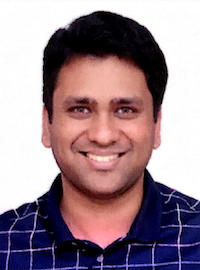 Ananth Govind Rajan IISc Bangalore | Multi-Scale Simulations to Design Materials for Separations and Catalysis Research problems at the water-energy nexus present some of the most compelling challenges facing humans at present. The generation of drinking water via seawater desalination and the electrochemical conversion of carbon dioxide (CO2) to valuable chemicals and water to hydrogen are the key to a sustainable future on planet Earth. Our group combines quantum-mechanical density functional theory (DFT) calculations with molecular dynamics (MD) and kinetic Monte Carlo (KMC) simulations to understand the molecular underpinnings of separations and catalysis using nanomaterials. In this talk, I will present our recent work on the design of nanopores in two-dimensional (2D) materials for separation applications, by combining DFT calculations with KMC and MD simulations. I will introduce a machine learning framework to predict the formation time/probability of an arbitrary nanopore in graphene. Subsequently, I will discuss how grain boundaries and defects in 2D materials can modulate water and ion transport on and through these materials. I will also present some catalyst discovery efforts, wherein we unravel new mechanisms for CO2 reduction to methane on pure/doped copper and 2D molybdenum disulfide. Overall, the multi-scale simulations presented in this talk will help understand and advance the use of 2D materials and single-atom alloys for separation and catalysis applications. Author Bio: Dr. Ananth Govind Rajan is currently an Assistant Professor in the Department of Chemical Engineering at the Indian Institute of Science (IISc). Dr. Govind Rajan obtained his B.Tech. degree in Chemical Engineering from the Indian Institute of Technology (IIT) Delhi in 2013 and his M.S. and Ph.D. degrees from the Massachusetts Institute of Technology (MIT), in 2015 and 2019, respectively. At MIT, he worked with Profs. Daniel Blankschtein and Michael Strano. Subsequently, he worked as a Postdoctoral Research Associate with Prof. Emily Carter in the Department of Mechanical and Aerospace Engineering at Princeton University, before joining IISc in 2020. Ananth’s research group combines quantum-mechanical and classical molecular simulations with machine learning to model the controlled synthesis of two-dimensional materials, and the applications of nanomaterials in electro- and thermo-catalysis, water desalination, and gas separations. He has been recognized by the Infosys Young Investigator Award from the Infosys Foundation, the Carbon Nanomaterials Graduate Student Award from the American Institute of Chemical Engineers, the Rosemary Wojtowicz Award from the MIT School of Chemical Engineering Practice, and the Graduates of the Last Decade (GOLD) Award from IIT Delhi. He is a Young Associate of the Indian National Academy of Engineering. |
| November 22 at 11:30 | |
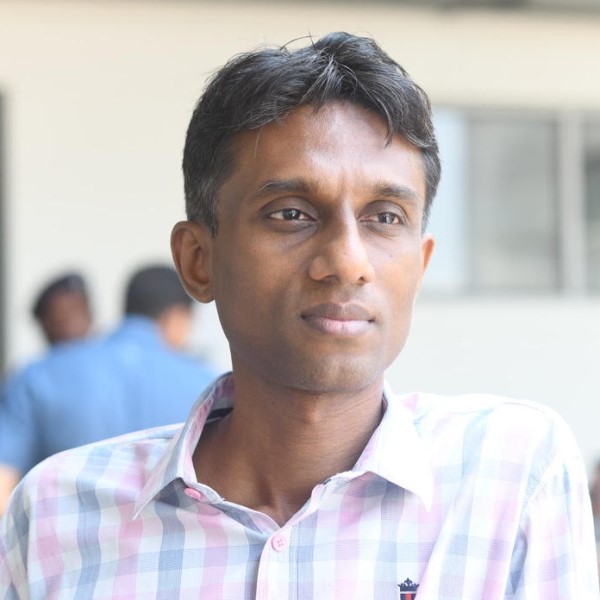 Vinod Janardhan IIT Hyderabad | A Julia Package for Modeling Thermochemistry, Chemical Kinetics, and Transport Processes Calculation of thermochemistry data, transport properties, and chemical kinetics are unavoidable in the simulation of chemically reacting flows. Chemkin was the first software tool developed for simulating chemically reacting flows using micro-kinetic models. Originally developed at Sandia National Labs, Chemkin is now a part of Ansys. The other software specifically developed for the modeling of chemically reacting flows is Cantera, written in C++ with interfaces to Python and Matlab. Software packages that are easy to understand and modular are essential for the research community so that even a novice can use and extend the packages' functionality whenever required without spending much time understanding the intricacies of a programming language. Julia is becoming highly popular among the scientific computing community due to its simple syntax and execution times comparable to C and Fortran. In the Department of Chemical Engineering at IIT Hyderabad, we have developed a collection of Julia packages to calculate thermochemistry data, transport properties, and chemical kinetics (gas phase and surface). These packages are published under the MIT license and are freely available for download from GitHub. This talk will introduce these packages and conclude with an example dealing with the modeling of tri-reforming of CH4 in a fixed-bed reactor. Author Bio: Vinod Janardhan is a faculty member at IIT Hyderabad. He completed PhD from Karlsruhe Institute of Technology. His research interests are primarily focused on electrochemical devices and heterogeneous catalysis. |
| November 22 at 12:00 | |
Fatima Jalid NIT Srinagar | Ab-initio Microkinetic modeling and Simulations – Towards the Design of Transition Metal Catalysts for Selective Transformation of Hydrocarbons Author Bio: Dr. Fatima Jalid is working as an Assistant Professor in the Department of Chemical Engineering at NIT Srinagar from 2020. Since 2016, she was working as a Trainee Teacher at NIT Srinagar, while simultaneously doing her PhD from IIT Delhi. She graduated summa cum laude in B.Tech. Chemical Engineering at NIT Srinagar in 2015, and was awarded a gold medal for the same. Fatima has been the recipient of Gandhian Young Technological Award, presented by the Honorable President of India. She has also received the Vallway Women Scientist Award 2022. She recently got selected as one of the 75 women in “She Is - 75 Women in Chemistry” by Beyond Black in partnership with the Office of Principal Scientific Adviser, Government of India and Royal Society of Chemistry. She works in the area of computational catalysis, specifically on understanding transformations of hydrocarbons using ab initio microkinetic modelling towards the sustainable production of fuels and chemicals. Besides research and teaching, she spends time in reading, photography and writing. |
| November 22 at 12:30 | |
 Ankit Tyagi Shell India | Physics based AI/ML for large scale physical applications
Author Bio: Ankit is a researcher in Systems Modelling team, Computational Sciences at Shell Technology Center, Bangalore. He has 5 years of industrial experience. His research interest includes the hybrid modelling i.e. combining AI with physics based models in wind, upstream and downstream oil and gas processes. Prior to joining Shell, he has worked for 1.5 years in AI and ML technologies like computer vision, NLP etc. He has done PhD in computational fluid dynamics from Indian Institute of Science, Bangalore in 2018. |
| Lunch Break on November 22 at 13:00 | |
| November 22 at 14:30 | |
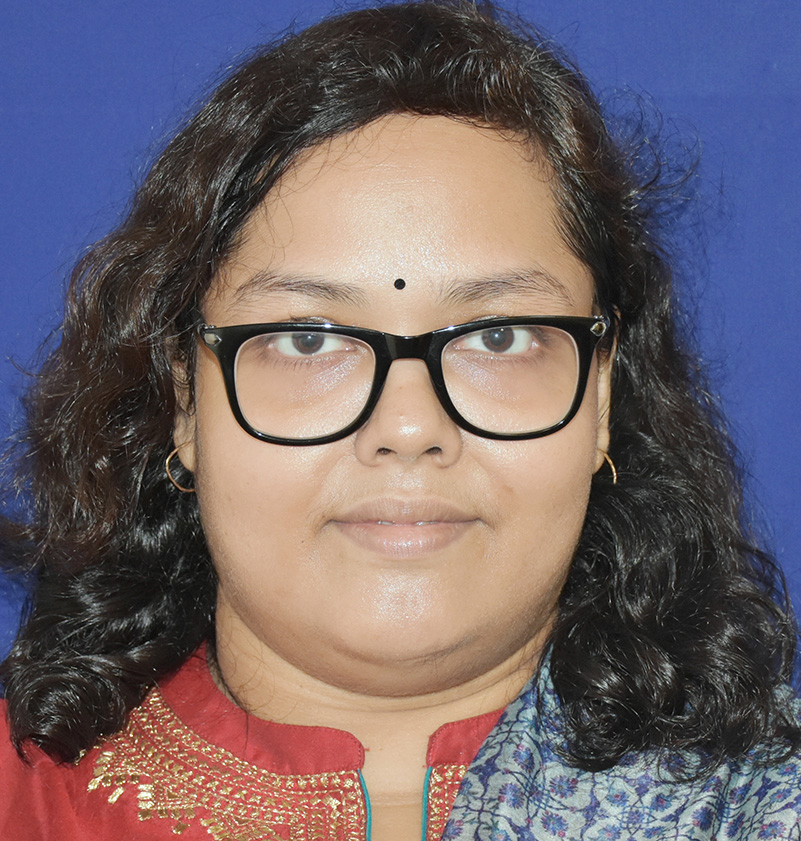 Paramita Haldar BITS Goa | Molecular Modeling and Atomistic Simulation from Biomolecules to Nanomaterials Molecular Modeling Simulation is crucial to understand the structural evolution, surface properties, and thermodynamics for a wide range of materials from bio molecules to nanomaterials. The major objectives in my research area is to study the electronic and structural properties of different types of materials used for hydrogen storage, energy storage, separation process, reaction kinetics, drug delivery, heritage preservation to protein folding. Author Bio: Paramita Haldar is an assistant professor at BITS Goa. She completed BE from Jadavpur University, MTech from IIT Kanpur, and PhD from IIT Bombay. She specializes in Molecular Modeling. Dr. Haldar’s research encompasses the area of molecular simulation techniques, ranging from quantum chemistry to Molecular Dynamics (MD), Kinetic Monte Carlo (KMC), Molecular Docking, and Nudged Elastic Band Method (NEB) study, in order to investigate fundamental properties of materials such as quantum properties, structural phenomena at nanoscale, kinetic pathways, reaction mechanism at atomistic scale and dynamic properties of materials. She has worked with various types of materials including ionic materials, composite materials, semiconductors and metal complexes. Dr. Haldar has also worked on molecular docking with protein molecules and ligands to study their interaction and also in drug design. She has worked with different open sources softwares like Quantum Espresso, VASP, Autodock Vina, Avogadro, CPMD, and VMD. She has a prior experience in Matlab and FORTRAN coding on kinetic Monte Carlo and molecular dynamics simulations. |
| November 22 at 15:00 | |
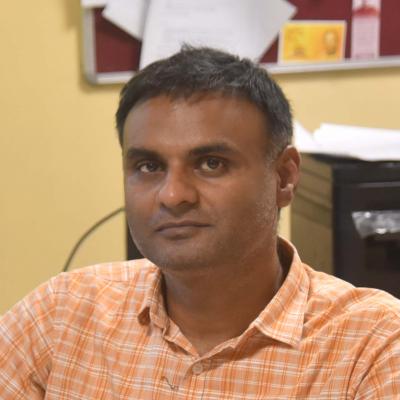 Raghvendra Gupta IIT Guwahati | Modelling Transport Processes in Chemical and Biomedical Systems In this talk, I will give a brief overview of the research activities based around modelling of momentum, mass and heat transport processes in system of different scales used in chemical processing and biomedical applications. Specifically, I will discuss modelling and validation of multiphase flow in micro and mesoscale reactors, modelling and validation of hydrodynamics large scale multiphase reactors/vessels and patient-specific modelling in cardiovascular systems. Author Bio: Raghavendra Gupta is an associate professor at IIT Guwahati. He completed BE from HBTI Kanpur, MEng from IISc Bangalore, and PhD from the University of Sydney, Australia. His research interests are Multiphase flow, Microfluidics and micro process engineering, Computational and experimental fluid dynamics. |
| November 22 at 15:30 | |
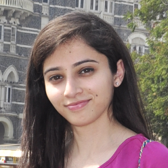 Shelaka Gupta IIT Hyderabad | Proton Coupled Electron Transfer in Furfural Alkylation Reaction on Pd Nanostructures: A Combined Experimental and Theoretical Study Acetalization reaction of furfural and alcohols is generally used for the production of furfural dialkyl acetals which are promising biofuels. Using defined experiments and density functional theory (DFT) simulations, the structure-dependent activity and selectivity for furfural acetalization reaction in the presence of alcohols (methanol, ethanol, propanol and butanol) as solvents was studied over well-defined supported Pd nanostructures. Catalyst morphology and solvent environment plays were observed to play an important role in governing the overall conversion for this reaction. Pd cubes/TiO2 in the presence of ethanol as a solvent exhibited 78% conversion and 100% selectivity for furfural diethyl acetal product in a short duration of time (~180 min) at room temperature and balloon pressure H2. In contrast, Pd octahedra (111) and Pd spheres showed low conversions (18% and 6%) under same reaction conditions. Interestingly, methanol when used as a solvent showed highest conversion (90%) and selectivity (100%) for furfural acetalization over Pd cubes. DFT calculations elucidated the role of hydrogen bonding network between the solvent molecules and adsorbate enabling proton coupled-electron transfer, for accelerated reactions. Author Bio: Dr. Shelaka Gupta is currently working as an Assistant Professor in the Department of Chemical Engineering, IIT Hyderabad. She obtained her Ph.D. in Chemical Engineering from IIT Delhi in 2019. She did her Master’s from IIT Roorkee and Bachelors’s from DCRUST Murthal in Chemical Engineering. She is a co-founder of WowChemE Pvt Ltd. at IIT Delhi, which is focused on commercialising biorenewable products. Her research interests are focused on both experimental and theoretical heterogeneous catalysis for sustainable production of fuels and chemicals. On the theory side she has an expertise in molecular modelling using Density Functional Theory simulations. |
| November 22 at 16:00 | |
 Jithin Varghese IIT Madras | Hierarchical computations guided sustainable heterogeneous catalytic reaction engineering Author Bio: Dr. Jithin John Varghese obtained his PhD from Nanyang Technological University Singapore in 2017 under the supervision of Dr. Samir H Mushrif. After post-doctoral studies in the Cambridge Centre for Advanced Research and Education in Singapore, he joined the Department of Chemical Engineering at the Indian Institute of Technology Madras in 2018 where he is currently working as an assistant professor. He leads the Computational Catalysis Group where research activities primarily revolve around computational heterogeneous catalysis for sustainable production of fuels and chemicals from carbon dioxide, natural gas and biomass-derived feedstock. The group is also interested in computational design of materials for capture and separation of carbon dioxide. The group adopts a bottom-up approach to catalytic reaction engineering by deriving molecular insights on the physico-chemical phenomena determining catalytic reaction rates and product selectivity using electronic structure-based simulations within the framework of Density Functional Theory and molecular dynamics simulations. |
| November 22 at 16:30 | |
 Tarak Patra IIT Madras | Computational Design of Sustainable Polymers Most industrially used polymers contain permanent crosslinks, and they are challenging to reprocess and reuse once synthesized. In addition, these polymers are immiscible and incompatible. They do not form a homogeneous mixture. On the contrary, polymers that can rearrange their topology via the formation of reversible crosslinks among the chemical moieties are reprocessable and promising candidates for reusable and sustainable materials. The dynamic crosslinks enable them to have interesting mechanical, rheological, self-healing, adhesive, and shape memory properties. Several continuum scale models have been proposed to understand the flexibility, deformability, and stress relaxation of these materials. However, a comprehensive molecular scale understanding is lacking. Here, we study the structure, dynamics and phase behaviour of polymers that undergo bond exchange reactions using molecular simulation. We perform large-scale computer simulations and report entropy-driven densification and network phase separation in this class of materials. Moreover, we show that the creation of "living" gMBCPs (grafted multiblock copolymers) increases the miscibility and compatibility of a polymer blend with dynamic crosslinkers. The work provides fundamental insights into the thermomechanical reprocessing, recycling and design rules of sustainable polymers. Author Bio: Tarak Patra is an assistant professor of chemical engineering at Indian Institute of Technology Madras. He received his B.Sc (Honors) in Physics from University of Calcutta, and his PhD in chemical engineering from Indian Institute of Technology Kanpur. He has carried out his post-doctoral studies at The University of Akron (2015-2017), and at Argonne National Laboratory (2017-2019). His research expertise lies in development of theory, simulation, and machine learning techniques for advancing the current understanding and design of polymers and soft matter. His current research interests are in polymer electrolytes, polymer nanocomposites and sustainable polymers. |
Powered by NSM Nodal Centre for Training in HPC and AI